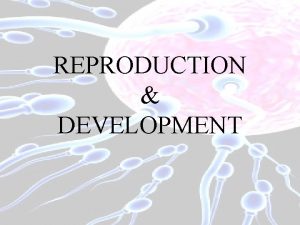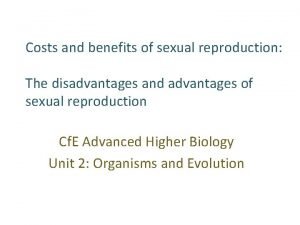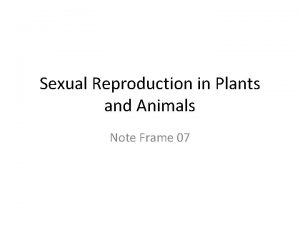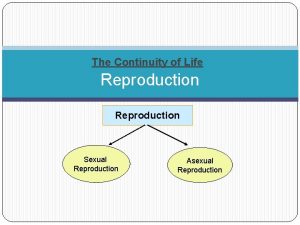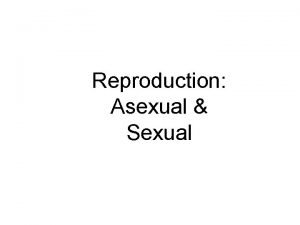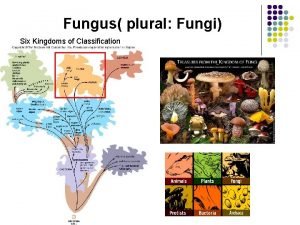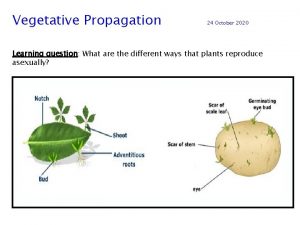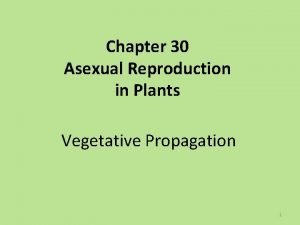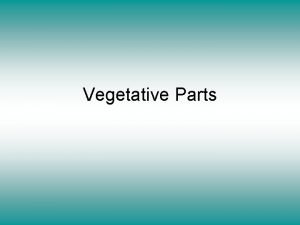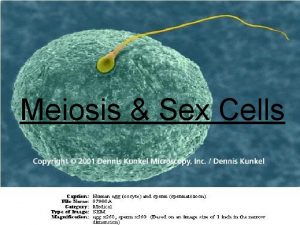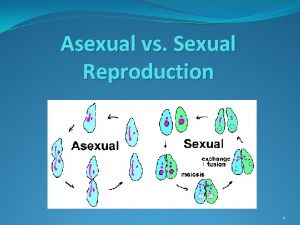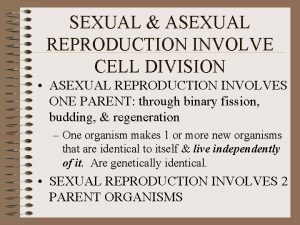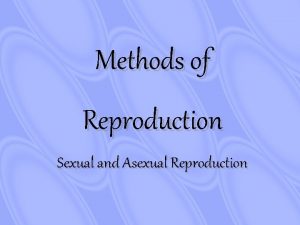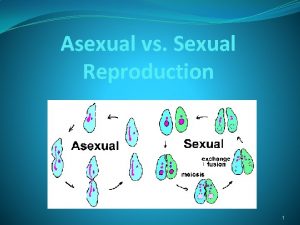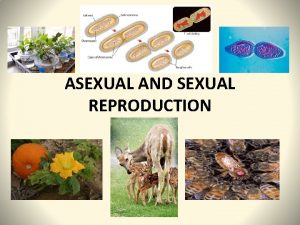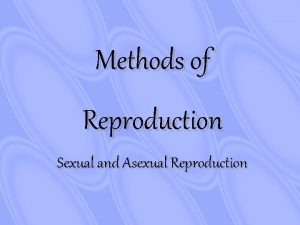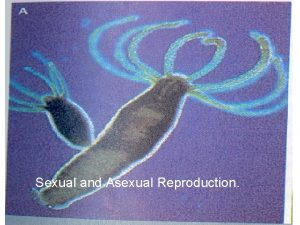Sexual Asexual Reproduction Vegetative Parts in Asexual Reproduction






















- Slides: 22

Sexual & Asexual Reproduction Vegetative Parts in Asexual Reproduction: Presentation 3 of 3

Asexual Reproduction • Asexual or vegetative reproduction involves the production of new plants by means of vegetative parts of an existing plant.

• The vegetative parts of many plants have the ability to produce new roots and/or shoots to form a new plant.

• Asexual reproduction is often advantageous over sexual reproduction because: • new plants reach maturity in less time; • disease-free plants can be produced in controlled environmental conditions;

• reproduction is possible for plants that do not develop reproductive parts or viable seeds; • plant selection for desired characteristics is more reliable; and • new plants are genetically identical to the parent plant.

• Vegetative plant parts used in asexual reproduction include: – Leaves – Stems – Buds – Roots

• Methods of vegetative plant reproduction include: – Cuttings – Layering – Separation – Division – Grafting – Budding – Tissue Culture

Cuttings • Propagation by cuttings is the most widely used method of vegetative or asexual reproduction.

Cuttings Cont’d • A cutting is any part severed from the parent plant, including: • stem cuttings, • root cuttings, and • leaf cuttings.

Layering • Layering involves forcing a vegetative plant part to form roots while still attached to the parent plant.

Types of Layering • Two types of layering are: – Air Layering, which is the process of forcing roots to form on a stem, outside the soil – Ground layering, which is the process of extending a plant part into the ground, covering it with soil, and allowing it to root.

Types of Layering Cont’d

Separation • Separation involves removing new plants formed on specialized stems and separating them from the parent plant.

Division • Division is the technique of cutting specialized plant structures into sections and forcing each section to grow into a new plant.

Grafting • Grafting consists of uniting a hardwood scion from one plant with the rootstock of another similar hardwood plant to form a vascular connection between the two plant parts.

Types of Grafting Techniques • The following techniques could be used in the grafting method.

Budding • Budding, which is similar to grafting, consists of removing buds from one plant and placing them on stems of other closely related plants to form a new plant.

Budding Techniques

Tissue Culture • Tissue culture, or micro-propagation, involves placing a very small piece of plant tissue on a sterilized culture medium. • Under sterile conditions, the plant tissue multiplies and grows into new plants.

Advantages of Tissue Cultures • Advantages of tissue culture as a means of asexual reproduction are that: – It allows large numbers of offspring to be produced quickly – it allows growers to produce disease-free plants; – it is a cost-efficient method of reproducing plants; and – it allows plants to be produced that have the same characteristics as the parent plant.

Disadvantages of Tissue Cultures • Disadvantages of tissue culture include: – The costs of necessary tools and equipment – The preciseness of establishing and maintaining sterile conditions needed for plant development – The requirement of additional time and labor as compared to other methods of asexual propagation.

Summary • Growers use several methods to multiply or increase the numbers of plant species. • Propagation methods can be sexual (reproducing from seeds) or asexual (vegetative production).
 Venn diagram of asexual and sexual
Venn diagram of asexual and sexual Binary fission in bacteria
Binary fission in bacteria Sexual reproduction and asexual reproduction
Sexual reproduction and asexual reproduction Asexual or sexual reproduction
Asexual or sexual reproduction Venn diagram of meiosis and mitosis
Venn diagram of meiosis and mitosis Example of budding
Example of budding Parthenogenesis asexual reproduction
Parthenogenesis asexual reproduction Mitosis sexual reproduction
Mitosis sexual reproduction Venn diagram sexual and asexual
Venn diagram sexual and asexual Sexual or asexual reproduction
Sexual or asexual reproduction Mitosis vs meiosis
Mitosis vs meiosis Asexual and sexual reproduction difference
Asexual and sexual reproduction difference Examples of sexual and asexual reproduction
Examples of sexual and asexual reproduction Sexual or asexual reproduction
Sexual or asexual reproduction Reproduction
Reproduction Advantages of genetic diversity
Advantages of genetic diversity Difference between sexual and asexual reproduction
Difference between sexual and asexual reproduction Plural form fungus
Plural form fungus Vegetative reproduction plants
Vegetative reproduction plants Vegetative reproduction requires mieosis.
Vegetative reproduction requires mieosis. Artificial vegetative reproduction
Artificial vegetative reproduction Root hairs
Root hairs Sex cells
Sex cells



